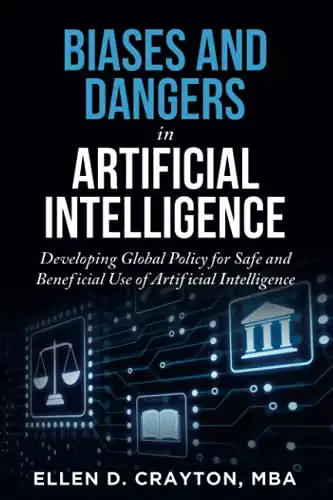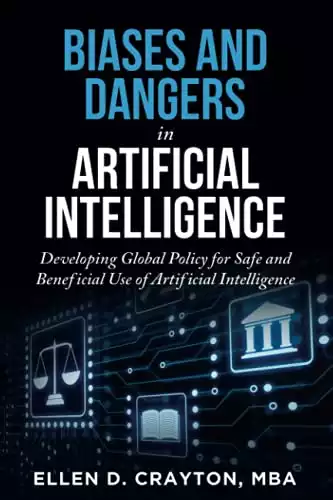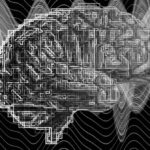Introduction – Dangers of AI – Dependence on AI
Dependence on AI: Artificial Intelligence (AI) has woven itself into the very fabric of modern society. It’s a driving force behind advancements ranging from medical diagnoses to autonomous vehicles, fundamentally changing how we work, communicate, and even socialize.
Leading physicist Stephen Hawking once warned that unchecked AI could outperform humans, posing a significant risk. These technologies offer countless conveniences and progress but also carry inherent risks that we can’t ignore. As we increasingly incorporate AI into daily life, it’s essential to examine the potential dangers associated with our growing reliance on this technology.
Over the course of this discussion, we will explore various concerns, from the erosion of critical thinking and loss of human skills to the very real risks of job displacement, data privacy issues, and beyond. The aim here isn’t to demonize AI but to engage in a comprehensive analysis of its darker implications.
We will delve into ethical considerations, examine how AI may perpetuate social inequalities, and even look at its environmental impact. The goal is to provide a nuanced view, aiding society in navigating the challenges that come with integrating AI into various aspects of human life.
Table of contents
Beyond Control
As AI technologies evolve at an unprecedented rate, questions about their long-term impact on human society become increasingly pressing. For example, the influence of AI on human decision-making is profound. The algorithms embedded in social media platforms, news outlets, and even educational software shape our opinions, choices, and interactions.
These intelligent systems have grown so ubiquitous that their absence would significantly affect the quality of life for many. There is an emerging dilemma over who gets to control these powerful tools. Is it the tech giants, governments, or should there be public oversight? Beyond control, there are pressing concerns about the ethical considerations involved in developing AI, such as data consent and the potential for algorithmic discrimination.
All these issues necessitate a thorough examination to ensure that society can reap the benefits of AI without suffering its potentially negative impacts. As we delve into these multifaceted challenges, the aim is to bring a balanced perspective that can help individuals, policymakers, and corporations make informed decisions in an increasingly AI-dependent world.
Also Read: Are Humans Smarter Than AI?
Loss of Critical Thinking
Artificial intelligence offers unprecedented convenience and efficiency, fundamentally altering how we go about daily tasks. With just a voice command, digital assistants can manage our schedules, and self-driving cars promise a future where we won’t even have to navigate the roads ourselves. While these advancements undoubtedly make life easier, they come at the cost of diminishing our critical thinking abilities.
Simple tasks that once required problem-solving are now outsourced to intelligent machines. For example, calculators and software now perform complex calculations in seconds, which is convenient but also reduces the need for people to engage in mathematical thinking.
This shift has substantial implications for education. Educators find it challenging to instill essential critical thinking skills when students rely on AI tools to solve problems for them. The impact on education is a cycle that could perpetuate the declining emphasis on critical thought, as future generations may become increasingly reliant on automated decision-making.
This decline isn’t limited to academic settings. In personal life, people tend to seek instant solutions provided by AI rather than investing the time and effort to think through problems. The result is a society that may become less innovative and adaptable because we’re growing unused to critical reasoning.
This creates a paradox. On one hand, AI aims to augment human capabilities, but on the other, it might be impairing essential human skills, creating an urgent need for balanced utilization of technology. Therefore, as we continue to integrate AI into our lives, it’s crucial that educational systems adapt to these changes, teaching the next generation not just how to use AI tools but also when not to use them.
Critical Thinking’s Loss is Misinformation’s Gain
The rise of artificial intelligence has led to a myriad of advancements that make our lives easier and more efficient. This ease comes at a price: the erosion of critical thinking skills. When people rely too much on AI for information and decision-making, they risk becoming passive consumers of data, which can have dire consequences.
One of the most significant threats we face today is the spread of misinformation or fake news. Automated algorithms control what we see on social media, and these can be easily manipulated to push false narratives.
Critical thinking is crucial for determining the truth of information. If people can’t evaluate sources and think critically, they become more vulnerable to misinformation. Before, reliable media outlets and journalistic integrity could somewhat control the spread of false information.
The democratization of information through the internet, coupled with intelligent algorithms that feed us what we want to see, has muddied the waters.
Even more concerning is that the algorithms behind these platforms are designed to keep users engaged rather than informed. They operate on machine learning models that identify user preferences and behaviors, serving content that is more likely to keep the user on the platform. This design inherently promotes content that might be polarizing or sensational, not necessarily accurate or well-researched.
The spread of misinformation isn’t just a nuisance; it can be outright dangerous. Inaccurate health information, divisive political propaganda, and unfounded rumors can all have real-world consequences.
Thus, as our dependency on AI systems grows, the risk of falling prey to misinformation increases. While tech companies bear a responsibility to improve their algorithms, the onus is also on individuals to maintain a healthy skepticism and rigorously evaluate the information they consume.
Therefore, there needs to be a societal shift toward re-emphasizing the importance of critical thinking. Educational institutions must take the lead by integrating these skills into curricula, thereby empowering future generations to navigate the age of information responsibly.
Also Read: Top Dangers of AI That Are Concerning.
Loss of Human Skills
As artificial intelligence becomes increasingly integrated into various aspects of life, there’s a growing concern that we might be losing essential human skills. The advent of technologies like machine learning, self-driving cars, and digital assistants has led to conveniences that we couldn’t have imagined a few decades ago. Yet, these very conveniences could be leading us down a path where basic human skills are becoming obsolete.
Consider the simple skill of reading a map. With GPS technologies embedded into our smartphones, the need to understand geography and navigate spaces without digital help is diminishing. Likewise, skills such as writing, cooking, or even basic arithmetic are being outsourced to machines. Voice-activated digital assistants can write emails or texts, recipe apps guide us step-by-step through cooking, and calculators handle any arithmetic we might encounter.
This phenomenon affects not only blue-collar jobs but also endangers white-collar roles, which often demand specialized knowledge and years of education. AI is now assisting or even entirely performing tasks like legal analysis, financial planning, and medical diagnoses, putting human expertise and intuition at the risk of redundancy.
While some argue that the delegation of these tasks allows us to focus on more complex and creative endeavors, there’s also a counter-argument that our brains need a varied diet of tasks to stay healthy and functional. Just as physical exercise is vital for our bodies, mental tasks that require varying degrees of effort and problem-solving keep our minds sharp.
So, what’s the solution? A balanced approach is required. There is a need for societal discussions, led by educators, policymakers, and technologists, on how to integrate technology into daily life without losing essential human skills.
Educators might have to revise educational curricula to encompass not only technological proficiency but also ‘human skills’ such as emotional intelligence, critical thinking, and problem-solving. In essence, while AI presents various advantages, it’s vital to account for its entire influence on human skill sets.
Job Displacement and Unemployment
One of the most immediate and concerning effects of the rapid adoption of artificial intelligence is its impact on employment. As AI becomes more capable, many jobs, from manufacturing and retail to even specialized professions, are at risk of automation. The allure for businesses is clear: machines can work around the clock, are not prone to human error, and do not require benefits or vacation time. The societal implications of this shift are substantial and warrant close scrutiny.
Historically, technological revolutions have displaced jobs but also created new opportunities, often in fields that didn’t exist before. The swift progression of AI prompts us to question whether the job market can rapidly adapt to counterbalance the roles that AI is eliminating. Job displacement isn’t just an economic issue; it has significant social ramifications. Long-term unemployment can lead to a range of societal issues. Which including increased rates of depression, crime, and even the breakdown of families.
Some propose that the answer lies in retraining programs aimed at helping displaced workers acquire new skills. Yet, the feasibility of such programs at a large scale remains an open question. Especially for older workers who might find it challenging to adapt to new career paths. Another potential solution is the introduction of a universal basic income, a government-provided stipend to support those without work. While financially and politically contentious, some form of safety net may become increasingly necessary as AI continues to replace human workers in various fields.
It’s also worth noting that job displacement due to AI could exacerbate existing social and economic inequalities. High-skilled workers who can adapt to work with AI may find their earning potential increase. While low-skilled workers could find themselves out of a job with no easy path to a new career. This polarizing effect could have lasting impacts on social cohesion and requires careful consideration from policymakers.
Also Read: Why AI is the Next High Paying Skill to Learn
Data Privacy Concerns
Data is the fuel that powers the engines of artificial intelligence. From personalized recommendations to predictive healthcare, AI systems rely on large sets of data to function. While these applications offer remarkable conveniences, they also raise significant privacy concerns. When we use digital assistants, social media platforms, or even healthcare apps, we often unknowingly give away massive amounts of personal information.
The depth and breadth of data collection are staggering. Everything from our online search history and social media interactions to biometric data can be stored, analyzed, and used by AI systems. The risk is twofold. Firstly, there’s the potential for misuse of this data by corporations or third parties. Unscrupulous use of personal data for targeted advertising is already a well-known issue. But the risks extend to more nefarious possibilities like identity theft or even blackmail.
Secondly, there’s the issue of data breaches. No system is entirely secure. The increasing sophistication of cyber-attacks means that personal data stored by companies are at constant risk. When such breaches occur, the consequences can be severe, affecting not just individuals but entire communities or even nations.
Regulations like the GDPR in Europe aim to give people control over their data, but such legislation is not universal. Even where laws exist, the rapid advancement of AI technologies often outpaces the ability of regulators to keep up.
Cybersecurity Vulnerabilities
As artificial intelligence systems become increasingly ubiquitous in both personal and professional spheres. They bring along a new set of challenges in cybersecurity. AI technologies have the potential to vastly improve security measures, yet ironically, they also introduce new vulnerabilities. Intelligent systems that control critical infrastructure, from power grids to financial systems, become lucrative targets for hackers.
The cyber threats in an AI-driven world are not merely theoretical; they’re real and evolving. Consider autonomous vehicles, a marvel of AI engineering, which could be susceptible to hacks that compromise the safety of passengers. Even digital assistants that help us in daily life can be turned into eavesdropping devices if compromised. Advanced AI techniques could also automate hacking activities. Which makes cyber-attacks faster and more efficient. This outpaces the ability of human experts to respond.
There are also concerns about autonomous weapons equipped with AI, which could change the face of warfare. These weapons, if hacked, could act unpredictably, causing unintended destruction. The potential for cyberattacks extends to AI used in public services. Like healthcare, where a breach could mean not just a loss of privacy but potentially life-threatening disruptions.
AI also challenges traditional cybersecurity measures. Traditional firewalls and antivirus programs may not be effective against threats empowered by advanced machine learning algorithms. This has led to a new frontier in cybersecurity efforts, focused on creating AI-driven security measures to counter AI-driven threats. It’s an ongoing race between protecting systems and finding ways to compromise them.
Also Read: The Rise of Intelligent Machines: Exploring the Boundless Potential of AI
Ethical Dilemmas in AI Applications
The rise of artificial intelligence has brought not only technological advancements but also a host of ethical dilemmas. These ethical questions touch on aspects from human decision-making to quality of life. Often creating complex problems with no easy solutions. One of the biggest concerns is the use of AI in applications where moral or ethical judgments are required.
For example, self-driving cars have to make split-second decisions in emergencies. The algorithms governing them must be programmed with a set of ethical rules. Whom should the car prioritize in an accident? The passenger, pedestrians, or maybe even animals? These questions have traditionally been the domain of human decision-making, based on complex moral reasoning that machines can’t replicate.
AI systems also have ethical implications in healthcare. While AI can assist doctors and improve diagnoses, what happens when the machine makes an error that harms a patient? Who is responsible? Similar dilemmas arise in the justice system where AI can assist in everything from parole decisions to sentencing recommendations. Can we trust a machine to make just and unbiased decisions?
The issue extends to autonomous weapons, like drones equipped with facial recognition. Such technology raises serious questions about the ethics of automated decision-making in life-and-death situations. Likewise, intelligence augmentation using AI could potentially lead to a world where some humans are enhanced while others are not, creating ethical and societal divides.
Considering these complex issues, it’s evident that we need a multi-disciplinary approach to navigate AI’s ethical landscape. Engineers, ethicists, policymakers, and the general public should all engage in this ongoing discourse. We must establish regulatory frameworks that ensure the responsible and ethical use of AI. These ethical guidelines shouldn’t remain fixed; they must adapt alongside the technology.
Algorithmic Bias and Discrimination
Artificial intelligence is often touted as a tool for objective decision-making. Yet, AI systems can inadvertently perpetuate or even exacerbate existing social biases. This is because machine learning models learn from data, and if that data reflects societal prejudices, the AI will too. Algorithmic bias can manifest in numerous sectors, from criminal justice and healthcare to employment and housing, leading to discriminatory outcomes.
As an example, consider an AI system trained on historical lending data that mirrors current racial or gender biases. In this case, it might approve loans for certain demographic groups less frequently. This not only sustains inequality but also erodes the concept of fairness in automated decision-making. Similarly, AI systems used in criminal justice, like predictive policing algorithms, could magnify racial biases when trained on skewed arrest or conviction data.
The problem is further compounded by the lack of diversity in the tech industry. If those developing AI systems are not representative of the broader population. The likelihood of building bias into these systems increases. Often the people affected by algorithmic bias are those with the least power to change the systems. This creates a vicious cycle.
To mitigate these issues, it’s crucial to approach AI development and implementation transparently and inclusively. The data sets used to train these algorithms should be carefully scrutinized. Steps should be taken to remove or adjust for biases. There’s also a growing need for third-party audits of AI algorithms, especially those used in critical public services.
Also Read: Can An AI Be Smarter Than A Human.
AI in Healthcare: Risks and Limitations
Artificial intelligence is making significant inroads into healthcare, providing new methods for diagnosis, treatment, and patient care. AI’s capabilities range from analyzing X-rays and MRIs to identifying potential drug interactions. While the potential for positive impact on healthcare is enormous, there are also notable risks and limitations that must be addressed.
To begin with, AI algorithms in healthcare rely on the quality of the data they’re trained on. If the data is incomplete, outdated, or biased, the AI’s conclusions can be erroneous, possibly resulting in misdiagnoses or unsuitable treatments. This also raises concerns about data privacy, as securely storing and managing patient data used for training these algorithms is crucial; otherwise, there could be significant consequences.
Next, AI systems can err, particularly in healthcare where the consequences can be dire. Unlike other domains, an inaccurate output here might result in life-threatening scenarios. Human supervision is essential to double-check the AI’s suggestions, prompting inquiries about the degree of reliance we can have on these systems.
Next, there’s the potential for widening the healthcare gap. Advanced AI systems are costly and may only be available in well-funded healthcare settings. This could exacerbate existing disparities in healthcare quality between different regions or socio-economic groups.
Next, ethical concerns arise about who bears responsibility if an AI system causes harm to a patient due to an error. These ethical dilemmas gain complexity when AI takes on crucial decision-making roles, like distributing scarce medical resources.
Autonomy vs Control: Ethical Considerations
The issue of autonomy versus control is a pressing ethical concern in the realm of artificial intelligence. As AI systems become increasingly advanced, the line between human control and machine autonomy starts to blur. This poses ethical questions around responsibility, accountability, and ultimately, the role of human intelligence in a world increasingly governed by intelligent machines.
For example, self-driving cars represent a direct confrontation between the desire for automation and the need for human oversight. While these vehicles can navigate complex traffic scenarios, their programming might not fully encompass the nuances of human judgment, which becomes a matter of life and death in emergency situations. The question is: should there be a mechanism for human intervention, and if so, how should it be implemented?
Similar questions arise in the military context, where the development of autonomous weapons systems poses ethical and moral challenges. These machines, designed to make life-or-death decisions, raise questions about the very essence of human morality and ethics. If these weapons act autonomously, who is responsible for their actions? Can we ever trust machines to make ethical decisions in the chaos of a battlefield?
In corporate environments, AI algorithms are progressively assuming automated decision-making roles, including hiring, lending, and even criminal sentencing. Granting autonomy to these algorithms can result in biased or inequitable results. The question that arises is: Who takes on the responsibility for these determinations, and how can we effectively integrate substantial human oversight?
The issue also extends to everyday life, where AI algorithms recommend everything from what news we read to what products we buy. While this improves the quality of life by simplifying decisions, it also raises concerns about the loss of individual autonomy in our daily choices.
AI and Environmental Impact
Artificial intelligence holds the promise of solving complex problems, from climate change to resource management. But it’s essential to consider the environmental impact of AI itself. Training large machine learning models and running data centers consume significant amounts of energy, contributing to carbon emissions.
For example, the energy required to train a single large-scale AI model can be equivalent to the average energy consumption of multiple households over a year. This energy use mostly comes from non-renewable sources, which worsens the environmental impact. So, while AI has the potential to improve efficiency and optimize resource usage, its own footprint can’t be ignored.
Even everyday AI applications in daily life, such as digital assistants and recommendation engines, require data centers that consume electricity. On a larger scale, industries like transportation and manufacturing that are increasingly integrating AI should be aware of the carbon emissions resulting from these technologies.
There’s also the issue of electronic waste. As AI technologies advance, hardware becomes obsolete more quickly, contributing to growing e-waste problems. Unlike other forms of waste, electronic waste often contains hazardous materials that pose both health and environmental risks.
Despite these concerns, AI also offers solutions for environmental problems. It can optimize energy usage in various sectors, predict natural disasters with better accuracy, and even identify endangered species in large ecosystems. But for AI to be truly beneficial in an environmental context, a shift is needed towards more sustainable practices in AI development and deployment.
Social Isolation and Psychological Effects
Artificial intelligence is becoming a fixture in our daily lives, from digital assistants to social media algorithms. While AI has made many tasks easier and more efficient, there is growing concern about its impact on social interaction and mental health. With intelligent machines taking over various functions, there’s a risk of increasing social isolation and related psychological effects.
People might choose to interact with AI-driven platforms or digital assistants rather than engage in human-to-human contact. For example, chatbots and virtual companions can provide immediate responses and gratification, making them a convenient substitute for human interaction. This could reduce the time spent with family and friends, potentially leading to feelings of isolation.
The issue extends to younger generations, where AI-driven toys and educational tools are replacing traditional forms of play and learning. While AI has a positive impact on education by personalizing learning experiences, there’s concern that over reliance on these technologies can affect the social development of children.
AI also plays a role in the spread of fake news and misinformation online. Algorithms designed to keep users engaged can lead to echo chambers, where people are only exposed to opinions similar to their own. This can contribute to social polarization and create a distorted perception of reality, affecting mental well-being.
Additionally, AI tools used in mental health diagnosis and treatment have their own set of challenges. While they can aid in identifying symptoms and suggesting treatment plans, they lack the emotional intelligence that human healthcare providers offer. Misuse or over reliance on these tools could lead to improper treatment and exacerbate mental health issues.
Conclusion
Artificial intelligence is a transformative technology, affecting nearly every aspect of our lives. From healthcare and transportation to education and employment, the capabilities of AI are vast. But with these advancements come a host of ethical, social, and environmental concerns that we must address proactively.
The risk of job displacement, data privacy issues, and cybersecurity vulnerabilities are some of the biggest concerns. We also can’t overlook the impact on critical thinking, the spread of misinformation, and loss of human skills. Ethical dilemmas in AI applications, algorithmic bias, and the environmental impact of AI systems further complicate the matter.
With the advancement of AI technologies, a mounting tension emerges between machine autonomy and human control. It’s crucial to strike the appropriate equilibrium to ensure that AI functions as a support for human intelligence rather than a substitute. The boundary separating human decision-making and automated processes is progressively fading, necessitating heightened vigilance in how we seamlessly incorporate AI into our everyday routines.
It’s crucial that as we advance in this field, we also advance in our ethical understanding and regulatory frameworks. Multi-disciplinary collaboration will be key in navigating the complex landscape of AI ethics and impacts. From tech developers and policymakers to educators and consumers, each of us has a role to play in shaping the future of AI in a responsible and ethical manner.
References
Müller, Vincent C. Risks of Artificial Intelligence. CRC Press, 2016.
O’Neil, Cathy. Weapons of Math Destruction: How Big Data Increases Inequality and Threatens Democracy. Crown Publishing Group (NY), 2016.
Wilks, Yorick A. Artificial Intelligence: Modern Magic or Dangerous Future?, The Illustrated Edition. MIT Press, 2023.
Hunt, Tamlyn. “Here’s Why AI May Be Extremely Dangerous—Whether It’s Conscious or Not.” Scientific American, 25 May 2023, https://www.scientificamerican.com/article/heres-why-ai-may-be-extremely-dangerous-whether-its-conscious-or-not/. Accessed 29 Aug. 2023.












